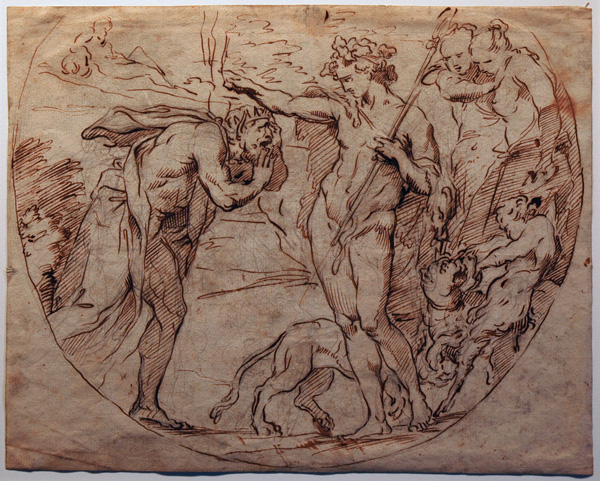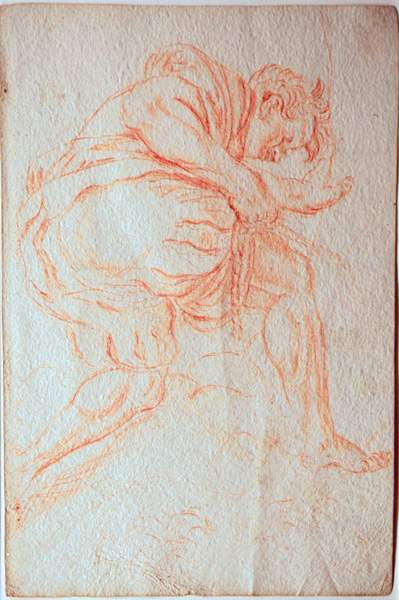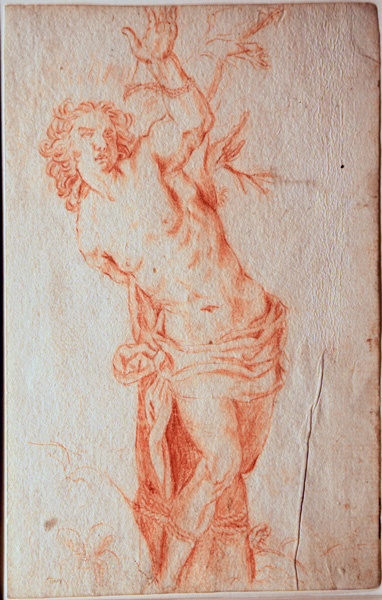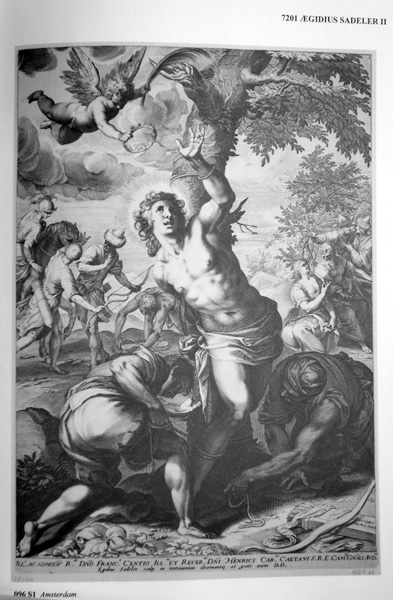|
Welcome to Spaightwood Galleries, Inc.
120 Main Street, Upton MA 01568-6193
You can follow us on Facebook and Twitter!
We blog regularly on Facebook and announce special events and special sales on both sites.
Old Master Drawings: Annibale Carracci (Bologna, 1560-1609, Rome)
|
|
|
|
From their studio, the Italian brothers Annibale (1560-1609) and Agostino Carracci (1557-1602), with their cousin Ludovico (1555-1619), produced art that greatly influenced European painting and drawing of the 17th and 18th centuries. Through their study of nature and the art of Michelangelo, Raphael, and Correggio, they rejected the mannered approaches of contemporaries and laid the foundation for the development of Baroque art. Though many drawings were studies in preparation for painting commissions, they drew everything they observed more extensively than previous generations of artists: people, animals, landscapes, and everyday life scenes. They studied these drawings and students in the Academy they founded studied them. Their drawings influenced the great English architect, Inigo Jones, and Carracci drawings entered England's Royal Collection as early as the 1700s.
As Diane De Grazia put it in the introduction to the section on Annibale Carracci in Corregio and His Legacy, "Considered the genius of the Carracci family, Annibale was certainly the most inventive as well. In the past thirty years he has finally been recognized for his achievements. There are now several monographs on the artist, and the current argument among scholars concerns the extent of his genius: was it innate or was he also a learned man? Annibale probably trained as a painter under his elder cousin Lodovico and he learned printmaking from his brother Agostino. He traveled (perhaps as early as 1580) to Venice and Parma, where he came under the influence of Correggio, which along with that of Barocci is apparent in his early drawings and in his work in the Palazzo Fava frescoes. Later in the 1580s he visited Venice, and his work in the late 1580s, such as the Madonna of Saint Matthew in Dresden, shows the impact of Titian in both color and composition. After working with Loodovico and Agostino in the early1590s on the Palazzo Magnani frescoes and on other joint projects, he was called to Rome in 1594. Except for a brief trip back to Bologna in 1595 and one to Naples in 1609, he remained there until his death in 1609. His Roman masterpieces (in fresco) are the Camerino Farnese (1595-1597) and the Galeria Farnese (1597-1600) in the Palazzo Farnese. In the Camerino the spirit of Correggio was sustained, but in the Galeria Raphael and Michelangelo replaced Annibale's earlier hero as a source of inspiration. This might suggest that the label of eclectic pinned on Annibale is a correct one. However, like most artists Annibale was influenced by a variety of sources, and his genius lay in his skill at adapting these disparate styles to his own original personality. Annibale's lasting contribution was not only his renewal of Renaissance sources, but his new appreciation of nature. The combination of forms based on nature and on an artistic ideal made Annibale the inspiration for Roman painters of the entire seventeenth century" (364).
Annibale also treats Apollo in a drawing in the Royal Colection at Windsor Castler. See catalogue number 312: Apollo receiving the lyre from Mercury in R. Wittkower, The Drawings of the Carracci in the Collection of Her Majesty the Queen at Windsor Castle (London: Phaidon Press, 1952), p. 140.
We will be adding illustrations of engravings by or after Annibale and Agostino as soon as time permits.
Selected Bibliographty: Daniele Benati, Diane De Grazia, Gail Feigenbaum, Kate Ganz, Catherine Loisel Legrand, et al. The Drawings of Annibale Carracci (Washington: National Gallery of Art, 1999); Diane DeGrazia Bohlin, Prints and related drawings by the Carracci Family. A catalogue raisonne (Washington DC: National Gallery of Art, 2000); J. P. Cooney, ed. L'Opera Completa di Annibale Carracci (Milan: Rizzoli Editore, 1976); Carl Goldstein, Visual Fact over Verbal Fiction. A Study of the Carracci and the Criticism, Theory, & Practice of Art in Renaissance & Baroque Italy (Cambridge: Cambridge University Press 1990); Diane De Grazia, Corregio and His Legacy: Sixteenth-Century Emilian Drawings (Washington: National Gallery of Art, 1984); Donald Posner, Annibale Carracci: A Study in the Reform of Italian Painting around 1590, 2 v ols. (NY: Phaidon, 1971); Clare Robertson and Catherine Whistler, Drawings by the Carracci from British Collections (Oxford: Ashmolean Museum, 1996); R. Wittkower, The Drawings of the Carracci in the Collection of Her Majesty the Queen at Windsor Castle (London: Phaidon Press, 1952)
|
|
|
|
These two drawings are based upon an engraving by Aegidius Sadeler after Jacopo Palma il Giovane (Venice, 1548-1628), Torturer. Red chalk on heavy cream laid paper, c. 1580. A man, is tugging on a rope in his right hand, apparently increasing the tension. In the accompanying drawing, we see that the object of the tightening is St. Sebastian, tied to a tree and bound by the same rope. The drawing itself has been attributed to Annibale Carracci on the basis of style. Image size: 208x132mm. Sold only as a pair: Please call or email for current pricing information.
|
|
These two drawings are based upon an engraving by Aegidius Sadeler after Jacopo Palma il Giovane (Venice, 1548-1628),AFTER, St. Sebastian. Red chalk on heavy cream laid paper, c. 1580. In this drawing, we see St. Sebastian, bound by the same rope the torturer was using. The drawing itself has been attributed to Annibale Carracci on the basis of style. Image size: 208x132mm. Sold only as a pair: Please call or email for current pricing information.
|
|







